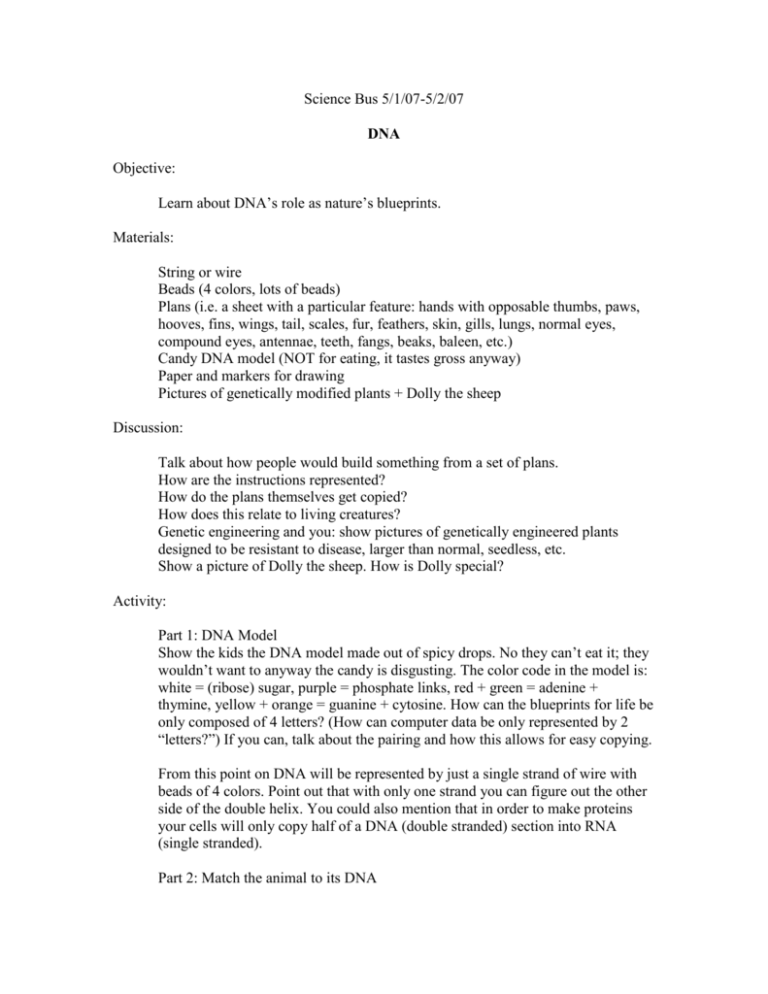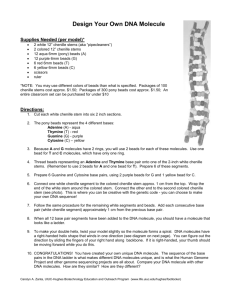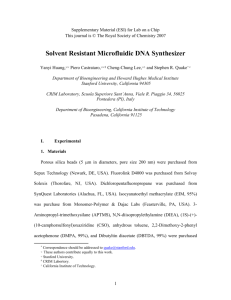Science Bus DNA activity
advertisement

Science Bus 5/1/07-5/2/07 DNA Objective: Learn about DNA’s role as nature’s blueprints. Materials: String or wire Beads (4 colors, lots of beads) Plans (i.e. a sheet with a particular feature: hands with opposable thumbs, paws, hooves, fins, wings, tail, scales, fur, feathers, skin, gills, lungs, normal eyes, compound eyes, antennae, teeth, fangs, beaks, baleen, etc.) Candy DNA model (NOT for eating, it tastes gross anyway) Paper and markers for drawing Pictures of genetically modified plants + Dolly the sheep Discussion: Talk about how people would build something from a set of plans. How are the instructions represented? How do the plans themselves get copied? How does this relate to living creatures? Genetic engineering and you: show pictures of genetically engineered plants designed to be resistant to disease, larger than normal, seedless, etc. Show a picture of Dolly the sheep. How is Dolly special? Activity: Part 1: DNA Model Show the kids the DNA model made out of spicy drops. No they can’t eat it; they wouldn’t want to anyway the candy is disgusting. The color code in the model is: white = (ribose) sugar, purple = phosphate links, red + green = adenine + thymine, yellow + orange = guanine + cytosine. How can the blueprints for life be only composed of 4 letters? (How can computer data be only represented by 2 “letters?”) If you can, talk about the pairing and how this allows for easy copying. From this point on DNA will be represented by just a single strand of wire with beads of 4 colors. Point out that with only one strand you can figure out the other side of the double helix. You could also mention that in order to make proteins your cells will only copy half of a DNA (double stranded) section into RNA (single stranded). Part 2: Match the animal to its DNA Provide a chart that matches up the body parts with DNA. Start with normal looking animals and progress to increasingly wacky ones. The kids have to figure out what kind of DNA sequence will generate that kind of animal. Part 3: Transcription + Mutation (Telephone) Provide one long sequence of beads on a wire for each table. The kids take turns copying the sequence but they have a limited time to do so. The next kid can only look at the copied sequence not the original. Rinse, lather, repeat. See how close the final sequence is to the first. Talk about how this gives rise to new species. Part 4: Design your own genetically engineered animal. Before the kids had to match up the DNA of the animals to the body parts, now they can put together whatever kind of animal they want. Provide the paper, the markers, and beads and wire. Ask them to create a DNA sequence and then draw what they think their animal would look like.









